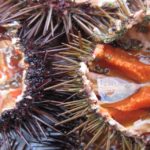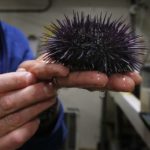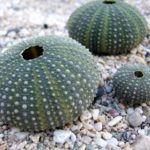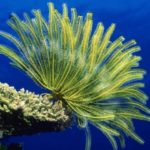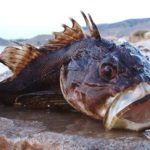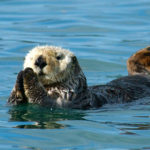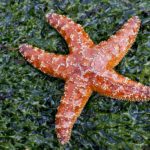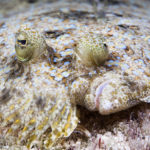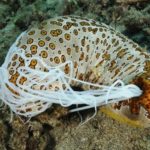27 interesting facts about sea urchins
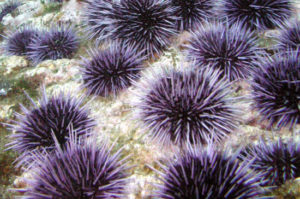 Amazing sea urchins are always the focus of attention of fans of swimming with a mask or scuba diving. These strange creatures look very unusual, and many people want to touch them, which absolutely should not be done. You can easily prick about the thorns of a sea urchin, and such injections are very painful.
Amazing sea urchins are always the focus of attention of fans of swimming with a mask or scuba diving. These strange creatures look very unusual, and many people want to touch them, which absolutely should not be done. You can easily prick about the thorns of a sea urchin, and such injections are very painful.
They established a kind of mutually beneficial cooperation with some species of small fish. The latter hide between the thorns of sea urchins from danger, and at the same time cleanse the skin of their survival partner from parasites.
Sexual maturity in sea urchins occurs only 2-3 years after birth. And in some of their species – even after 5 years. Therefore, they reproduce so slowly.
The vast majority of species of sea urchins are nocturnal.
Amazing tiara sea urchins got their name due to their ability to glow in the dark.
From the point of view of biology, sea urchins are echinoderms.
In all their species, the mouth is located in the lower part of the body, and the eyes are in the upper.
In sea otters, sea otters, sea urchins are an integral part of the daily diet. And since the flesh of the hedgehogs of these species contains a lot of dye, the interiors of sea otters turn purple.
The ratio between body size and needle length is most impressive in the aforementioned tiara sea urchins. They themselves have a diameter of 5-7 cm, and their needles can grow up to 50-70 cm.
One of the species of sea urchins does not know how to roll over if toppled over. In this case, these animals die.
Sea urchins absorb carbon dioxide, as plants do. And they also reduce the level of radiation in the oceans, which makes them extremely useful creatures.
During low tide, they do not risk staying on the shore, where they can become easy prey. In such cases, they either burrow into the sand or hide in holes.
Sea urchins are absolutely omnivorous. Moreover, even cannibalism thrives among some of their species.
It continues to grow throughout life.
Sea urchins move with the help of tiny legs with suction cups, with about a thousand feet.
They often serve as a hunter for starfish, crabs, lobsters, fish and birds.
Sea urchins are stubborn enough and strong enough to make holes for themselves even in the strongest rocks.
Among them, there are both live-bearing species and those that lay eggs.
Sea urchins are common around the world. They are found in all oceans and almost all seas, including the coldest.
Some of their species can live up to 30-35 years.
Annual rings on the shell of a sea urchin make it possible to determine its age in the same way as rings on a section of a tree show how old it is.
The only two seas in which there are no species of sea urchins are the Caspian and the Black. And also Dead, but, strictly speaking, it is not the sea at all.
Sea urchins use needles not only for protection, but also for hunting, and also move with their help.
Their needles are very fragile. If you run into them, they break off and crack, and it is very difficult to extract them from the wound.
Sea urchins are not able to live in water with low salinity, so they are never found in the seas and oceans in areas where large rivers flowing into them desalinate water.
The spines of some species of sea urchins contain deadly mucus.
These animals are ancient dinosaurs. Their first species appeared on our planet about 450,000,000 years ago.
In total, there are about 940 species of sea urchins in the world. Of these, 20 are found in Russian seas and coastal ocean waters.
